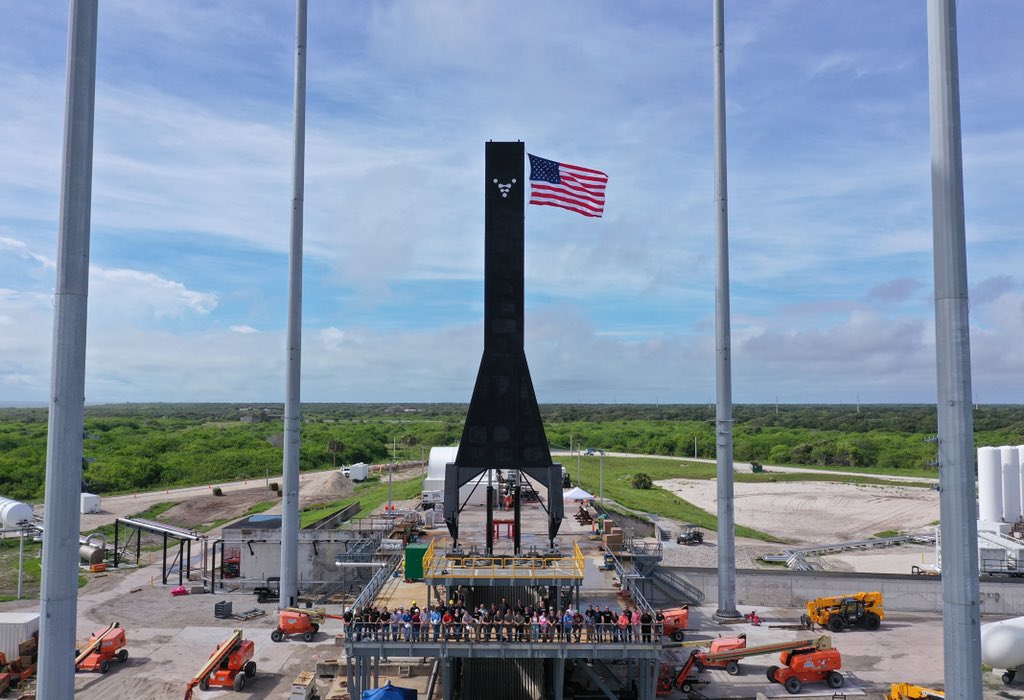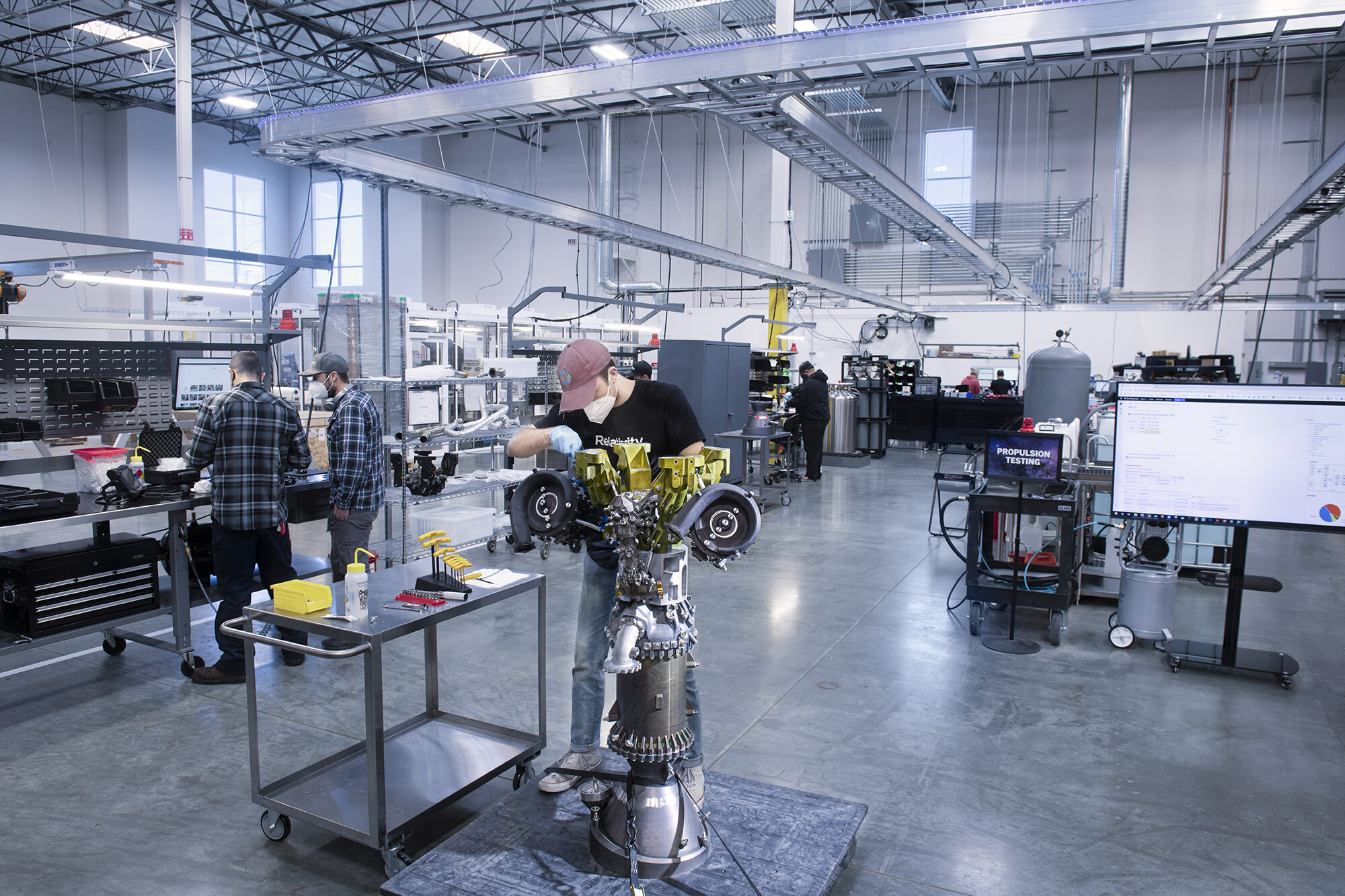
Relativity Space Is Making Fast Progress Towards A First Launch Attempt
Before a company attempts its first-ever orbital test flight, there is a lot of work to do. This involves the development, manufacturing, and thorough testing of practically every component. This is necessary as the first launch is very difficult and if just one thing goes wrong it likely ends in an explosion. However, Relativity Space has been working hard and is confident in the upcoming attempt.
Relativity Space will soon attempt the first orbital test flight of its Terran 1 rocket. This small-lift launch vehicle is very special thanks to its unique manufacturing process. If successful, Relativity Space will likely make a big impact on the space industry as 3D printing provides many different benefits when working on a rocket. Recent tests and updates suggest the first launch is not far from now.
Relativity Space is trying to change how you create a rocket. While risky, it could pay off significantly if they manage to figure it out. This includes the 3D printing on not only the main rocket structure but also engines and other vital components. Here I will go more in-depth into the recent progress and when we should expect to see Terran 1 take flight for the first time.
Terran 1 Progress

As Relativity Space gets closer to the first launch attempt, we are seeing the company progress even faster. Looking at recent months especially you can see how eager the company is to launch Terran 1 for the first time. Starting in early March a lot of progress began. Specifically, on March 3rd Relativity tweeted saying, “This week, the second stage of #Terran1 left our Long Beach HQ for its testing facilities at @NASAStennis. Check out this clip of Stage 2’s departure! Stay tuned for more updates. This tweet included a short video highlighting the second stage and part of its trip to the testing facilities. Only a few days later on March 10th, Relativity provided another update on the second stage’s journey this time with additional information. They highlighted that “this is the first rocket stage that we have shipped from the factory.” In addition, they expressed their satisfaction with the team and all the hard work that went into this milestone. From here, only a few weeks later in early April, Relativity Space provided another tweet update. This tweet mentioned, “We’re kicking off April with a fiery start! We recently completed our first successful Stage 2 60-second full duration hot fire test at @NASAStennis. This milestone is the result of a tremendous amount of hard work by our world-class team. Check it out!” Included were multiple angles of the second stage firing its engine.
Following these tweets from Relativity, the most recent update we received was only a few days ago on April 5th. The company tweeted saying, “The expansion continues! Our team is hard at work as we continue to build out our new 1M+ square foot headquarters in Long Beach, CA.” Relativity Space has quite a bit of infrastructure spread throughout the country. This specific headquarters and factory under construction are very important to the company’s future operations. The 120,000 square foot headquarters and expanded factory will host both the company’s business operations and an unprecedented manufacturing facility, integrating machine learning, software, and robotics with metal additive manufacturing technology to produce Terran 1. The factory’s massive size will play an important role in the 3D printing process and the overall efficiency of Relativity Space’s plans. They describe it as the Factory of the Future, the first aerospace platform to automate rocket manufacturing, vertically integrating intelligent robotics, software, and data-driven 3D printing technology. Incorporating Stargate, the world’s largest metal 3D printer with AI-driven controls, our Factory of the Future continuously optimizes production, resulting in greatly compounded quality and time improvements, lower costs, and product designs previously not possible. The new space will give them the opportunity to truly innovate the manufacturing process of rockets.
In terms of the recent second stage testing, this occurred at Relativity’s E4 test stand. Here complete development, qualification, and acceptance testing of Terran and Aeon occur. Relativity is investing capital to build on the existing site with a permanent team leading test operations. This specific test stand features 25 acre location including 15,000 ft2 of specialized test infrastructure, over 10,000 seconds of test data accumulated, four large test cells rated for both vehicles and engines, and an exclusive 20 year agreement. With all this progress happening, we should expect to see a launch not long from now. Specifically, in late 2021, Relativity tweeted saying, “A few updates on #Terran1: We’re excited to share that Stage 2 passed cryo pressure proof + hydro mechanical buckling test on our structural test stand. Up next: S1 structural testing! Terran 1’s demonstration launch is now set for early 2022 from Cape Canaveral LC-16.” Based on current information from the company and additional sources, we can expect a launch to happen towards the middle or end of 2022. As mentioned in the tweet, this launch will happen at LC-16. This site has been under construction for a while now and is meant to support the initial Terran 1 flight along with future customer launches. It is located at Cape Canaveral Air Force Station and is ideal for supporting low- to mid-inclination orbits.
Terran 1 Overview

Now that we know some of the recent progress Relativity Space has made regarding the first Terran 1 flight, we can take a closer look at the launch vehicle itself. Terran 1 is an expendable two-stage launch vehicle powered by liquid natural gas (LNG) and liquid oxygen (LOX). The Terran 1 vehicle is 35 m in height by 2.3 in diameter and uses 10 Aeon engines: nine Aeon-1 engines on the first stage, and one Aeon Vacuum engine on the second stage. Relativity’s Aeon engines are designed, assembled and tested in house. With the exception of the second-stage nozzle extension, each of Terran 1’s 10 engines is based on a common design, enabling simplified and repeatable manufacturing and acceptance testing. Aeon engines are fueled by liquid natural gas and liquid oxygen and operate using the gas generator engine cycle. Each engine uses two turbopump assemblies for thrust and mixture ratio control: one for liquid natural gas and one for liquid oxygen. The thrust chamber is regeneratively cooled with liquid natural gas, which is then injected into the main combustion chamber and burned with liquid oxygen to produce the required thrust.
Relativity prints all structures and major engine components using proprietary printable metal alloys, which leads to a dramatically simplified manufacturing process when compared to traditional fabrication methods. This will make it possible to shrink vehicle build and integration timelines down to just 60 days. The payload fairing leads its class in volume at 3 meters in diameter by 6.8 meters with a 986 mm standard payload interface. Terran 1’s fairing volume accommodates a variety of payload designs and configurations, including dedicated launch for single payloads and constellations as well as multi-manifest and rideshare configurations. Terran 1 is designed for a mission duration of up to 2.5 hours as a standard service. In addition, Terran 1 has a single-string avionics system designed using a combination of flight-proven, off-the-shelf components and in-house designs. The avionics system includes, but is not limited to, a flight computer, global positioning system (GPS), inertial measurement unit (IMU), telemetry processor, custom data acquisition and vehicle control processors, high speed sensor suite, batteries, and cameras. The avionics suite is duplicated on the test bench with a full hardware-in-the-loop (HITL) system to simulate full missions in order to exercise hardware, software, and algorithm performance in a test-like-you-fly environment. Relativity also develops ground and flight software in-house and thoroughly exercise it using HITL tests prior to deployment to a flight vehicle. Lastly, in order to maximize flexibility, the avionics system includes a bussed, modular infrastructure that makes it possible to rapidly add or subtract components to meet changing vehicle configurations. Relativity designed the avionics system to leverage component and architecture commonality across both stages in order to reduce development time and simplify vehicle operations. They also designed vehicle components to be as accessible as possible, allowing for them to quickly and unobtrusively make any necessary modifications late in the integration process. All of which combines into a very special and unique launch vehicle meant to change how rockets are manufactured.
Conclusion
Prior to launching a rocket for the first time, there are a lot of steps and checks needed to prepare the company and the launch vehicle. Relativity Space has been working very hard over the past few years to get to this point. Not long from now, we can expect to see the first-ever Terran 1 launch attempt. This will end up having a big impact on the way companies and agencies look at rocket manufacturing and more. We will have to wait and see how this launch progresses and the impact it has on the space industry.
